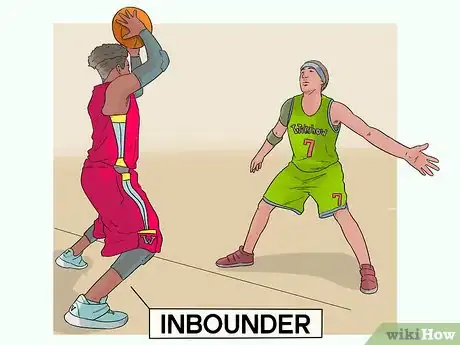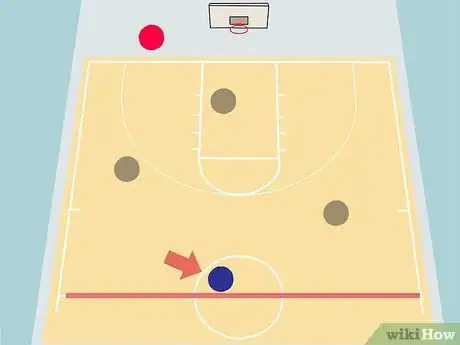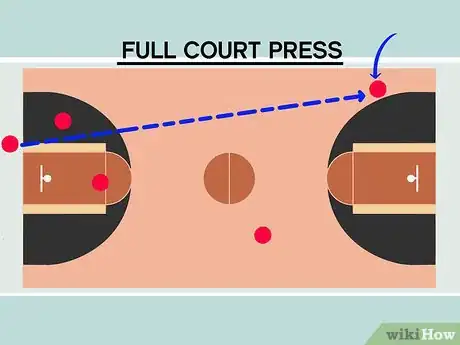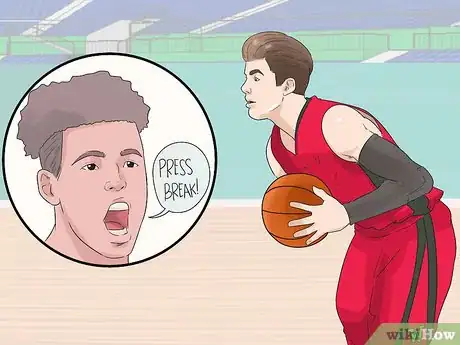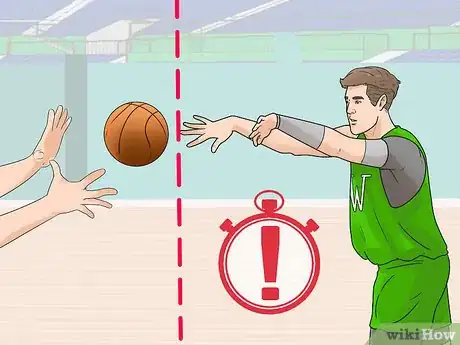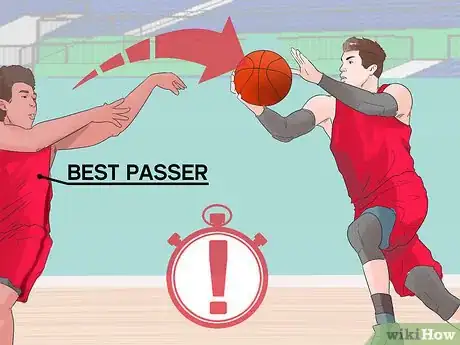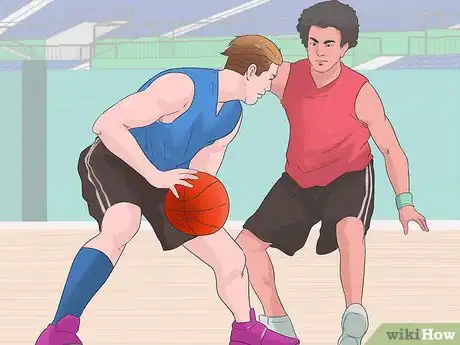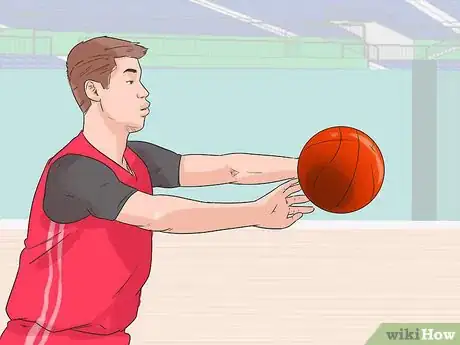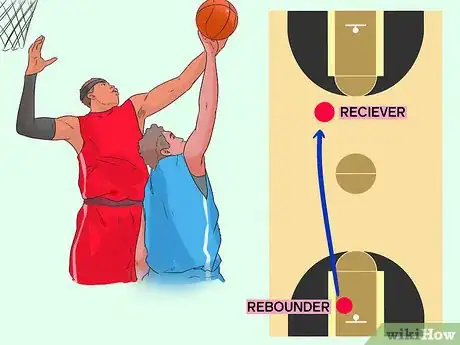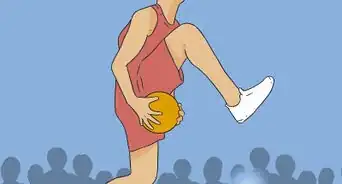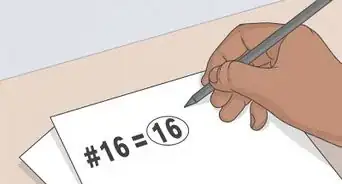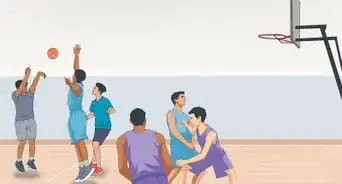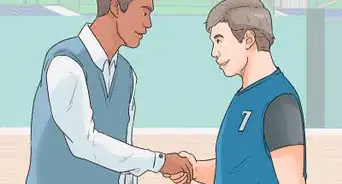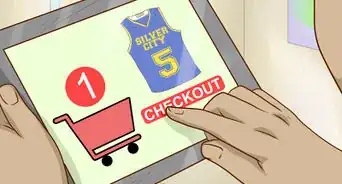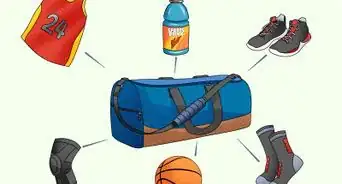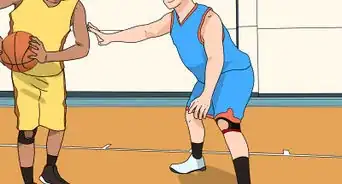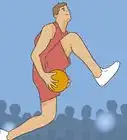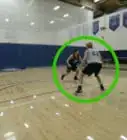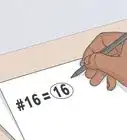This article was co-authored by Ryan Tremblay. Ryan Tremblay is a Basketball Coach and the Owner of National Sports ID and STACK Basketball. With over 30 years of experience, Ryan specializes in basketball coaching, social media marketing, and website design. Ryan created the National Sports ID as a platform to verify the age/grade of youth athletes and STACK Basketball to inspire young athletes to grow into mature individuals and basketball players. Ryan was a First Team All-Decade basketball player in Bergen County and finished in the top 20 all-time leading scorers in the county’s history with 1,730 points. He went on to Caldwell University on a basketball scholarship where he was part of three championship teams. Ryan was a two-time All-Metropolitan, All-State, and All-Conference point guard and the all-time three-point leader in the school’s history, landing him in the Caldwell University Athletic Hall of Fame.
This article has been viewed 52,042 times.
The full court press is a common tactic used by the defensive team in basketball. This strategy puts a lot of pressure on the offensive team, sometimes even putting two players guarding the ball. While the press can be stressful, an offensive attack can defeat it. A good press break offense will have designated roles for each player, assigning who will pass the ball in, who will receive it, and where everyone else will stand. You can also learn to keep the ball moving with quick passes, use the baseline effectively, watch for open players, and face your defender.
Steps
Designing a Press Break Offense
-
1Assign a player who will always inbound the ball. When you designate a player specifically for inbounding the ball, he or she can perfect that technique. They'll know where to look and how to run the baseline effectively.
- Having the same player take the ball out every time will help your team move more quickly because they won't have to figure out who's turn it is to take the ball out.
-
2Assign other roles. Speed is the most important thing in a press break offense, because you may be low on game time and you want to catch the defense off guard. Tell each player what spot to get to when the play starts.
- If the players know ahead of time where to go, they can get to that spot quicker than if they all have to figure it out every time you run the press break.
- You could have one player stay close to the person who will get the ball first to be backup in case the player needs to pass it before they can get to half court.
- The last two players can stack one in front of the other at the free throw line when the play begins and split off toward each sideline once the ball is at half court.
Advertisement -
3Keep one player in the middle of the court.[1] One the defense's goals with a press is to trap the ball along the sidelines or in the corners, so make sure one player stays in the middle of the court at all times.[2]
- This ensures that your players always have an option if the ball gets stuck on the sideline.
- You can keep the same player in the middle all the time, or you can have players rotate into the middle position. It may be good to decide on a specific rotating order so everyone knows when it is their turn to take the middle spot.
-
4Send your players deep. In a full court press, multiple defenders may cover the person with the ball to put more pressure on them. This leaves an offensive player open who can go deep on the court and look for a pass.
- It can be risky, but if you do have a player wide open at the end of the court, this can be a good opportunity for a lob pass all the way down the court. You may want to practice this type of passing ahead of time.
Getting the Ball In-Bounds
-
1Keep calm when you see the defense enter the full court press. The goal of a full court press is to get you flustered so you turn the ball over. When you know the press is coming, keep calm and know your plan of attack. Don't let mistakes distract you. Keep your head in the game and keep the ball moving.
- A well designed plan for attacking the press will have a significant impact on staying calm. Go over the press break offense often so you never forget how it works.
- Have a player call out “press break!” when they see it coming so that all players can get to their positions.
-
2Get the ball in-bounds quickly. The longer you keep the ball out of bounds, the longer the defense has to set up their press. If you can inbound the ball quickly then you put some of the pressure back on them.
- If you are the designated inbounder, always remember to grab the ball quickly after the other team scores and get into position, ready to pass.
- If you are typically the first player in-bounds to get the ball, start moving and watch for the pass.
-
3Run the baseline if your opponent just scored. Where you throw the ball in-bounds from is important, so whenever possible pick a spot between the basket and the corner. You don't want to get trapped in either one. Learn to move back and forth to shake your defender.[3]
- If you are inbounding because the ball went out of bounds (rather than after a score), the referee will hand it to you and you don't have the option of moving. Don't commit a turnover by moving when you aren't allowed to.
- Learn to move along the baseline in a way that you can easily pass the ball around the defender who is guarding you.
- Don't just run back and forth aimlessly, but move purposefully looking for your opening.
-
4Inbound the ball to your best passer. If you can set up your press break offense so that the best passer on the team is always the first to get the ball, you'll be able to move the play ahead smoothly. Get the ball into the best passer's hands and then let them pass it quickly.
- One this player gets the ball, they should get past half court quickly, as you only have 10 seconds to do this. Once they are past half court, they should look for the next pass.
Breaking the Press
-
1Face your defender. When you are up against a full court press, you never want to turn your back to the defender who is guarding you. This immediately allows them to close the distance between you and them. It also takes away your ability to see your teammates and watch for an opening.
- Stay in a nice low stance that allows you to dribble when necessary and easily pivot once you stop moving.
- Keep your free hand up to keep the defender from getting too close to the ball.
- If you can safely switch the ball from hand to hand, you'll have more options when you see an open teammate.
-
2Scan the court for open players. Since passing is crucial to breaking the press, knowing where your teammates are and who is open is important. Never watch the ball as you dribble. Keep your defender in sight but don't focus on them.
- You need to find a groove of scanning quickly enough that you see everyone but slowly enough that you notice when someone is open.
- Don't play favorites of who you want to pass it to. Get the ball to the player who is in the best position to make the play.
-
3Make quick, smart passes. You won't typically beat the press by dribbling, so focus on moving the ball from player to player as quickly as possible. When you have to dribble, do it for a short amount of time while you look for the next opening.[4]
- Quick passes mean getting rid of the ball as soon as you see an open player. Smart passes mean seeing potential defenders who could steal the pass and avoiding them.
Enhancing Your Press Break
-
1Get the ball to the hoop. Your main objective is still to score points, so once the immediate pressure if off, focus back in on the main point. Once the ball is across the half court line, pass it to your best shooter and either have them drive to the basket, or take a jump shot from where they are.
- Passing the ball from player to player is good to find the right opportunity, but if the defense is running a full court press then you are probably limited on time.
- Try to keep it to 2-4 passes total for the play. One pass to get it inbounds. One to get it across half court, or after half court. And 1-2 passes to get it to a player who can score.
-
2Beat the press after a missed shot. Sometimes you'll go on offense after the opponent misses a shot, so you won't be throwing the ball inbounds. The player who rebounds should begin to dribble down the court while everyone else sprints down ahead of them.
- The rebounder should be looking to make a good pass as soon as possible.
- The difference here is that the clock will not stop for you to take it out of bounds. Plus, the player will be passing from somewhere in the backcourt or dribbling down the court.
- You may not be able to control which player pulls down the rebound, but you can plan to have your best ball handler hang back so the rebounder can pass it to them.
-
3Scout the opposing team ahead of time. One of the best attacks for a press is knowing when it's coming. Many teams will consistently run the same format of full court press, so knowing this ahead of time will help you prepare for it come game time.
- If you are able to watch game film, you can try to isolate the times in the game when the team is most likely to enter the full court press. You may find they do it frequently. If so, you can drill your team on attacking the press successfully.
References
- ↑ Ryan Tremblay. Basketball Coach. Expert Interview. 13 November 2020.
- ↑ http://hoopsu.com/full-court-zone-press-attack-offense/
- ↑ http://www.playsportstv.com/basketball/articles/1594/youth-basketball-coaching-tips_how-to-break-the-press
- ↑ http://avcssbasketball.com/press-break/
